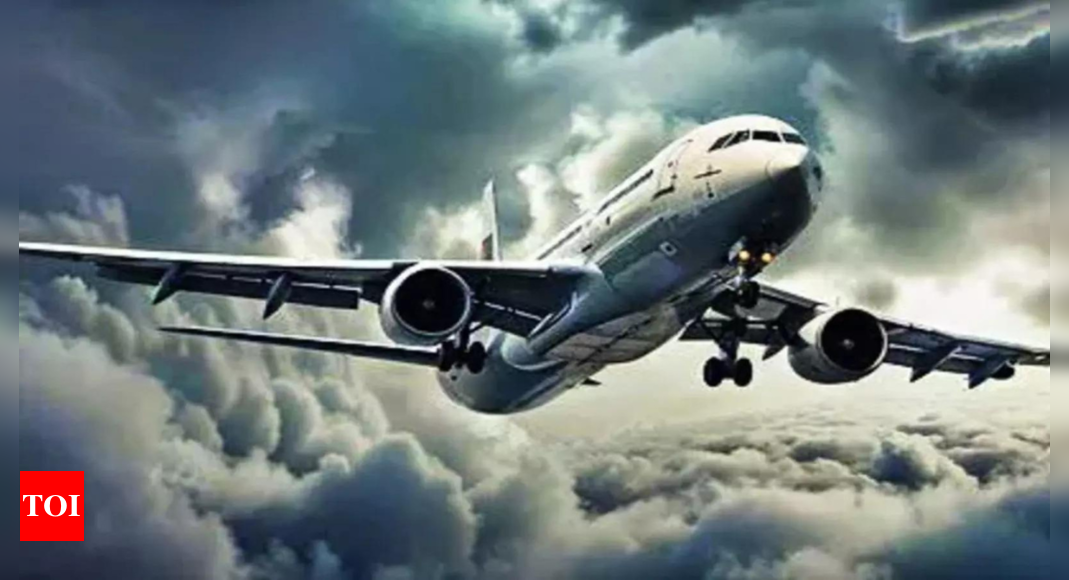[ad_1]
The rarest mishap occurred on Tuesday when a passenger died on Singapore Airlines’ Boeing 777 after “severe turbulence”. The flight was heading from London to Singapore but was diverted to Bangkok after the incident.
The incident, in which many passengers were injured, has thrown up multiple questions, with climate change impact being one of them.
Experts say global warming may increase instances of clear air turbulence by upto 200% by 2050. In India, the increase in flight turbulence could be felt during the pre-monsoon season.
Paul D Williams, a professor of Atmospheric Science at the University of Reading, UK says research has shown that severe clear-air turbulence, which is strong enough to catapult unbuckled passengers and crew around the aircraft, could become twice or even three times as common on some flight routes later this century.
Paul shares, “We’ve recently extended our analysis globally and that includes Indian airspace. We found that there will be significant increases in clear air turbulence over India within the next few decades. The projected increases are strongest in the northern half of India and are especially strong in the pre-monsoon season, in other words from March to May, when we estimate that there will be 100-200% more clear air turbulence by the period 2050-2080.”
Hazardous clear air turbulence
Paul explains that clear air turbulence is particularly hazardous to aircraft because it is invisible to both radar and satellites “and also because it cannot be seen by pilots from the cockpit either”.
“Clear air turbulence is caused by instabilities in the atmosphere, mainly in the jet stream and especially when wind shear is strong. Now, climate change is strengthening the wind shear. We know that the jet stream over the North Atlantic Ocean, for example, is already 15% more sheared than when the satellites began observing in the late 1970s,” said Paul Williams.
“Our studies have used climate models to show that this effect will increase the amount of severe clear air turbulence in the atmosphere by hundreds of per cent in the next few decades. And that’s just clear air turbulence. We need a lot more research before we understand whether and how the other kinds of turbulence due to storms and cumulonimbus clouds are also being modified by climate change,” says the professor,” he added.
How hot weather impacts aircraft engine performance
Flying becomes a little turbulent with the mercury level touching 40°C. The high surface temperature coupled with the presence of hills nearby triggers a sudden change in the direction of wind close to the ground, and crosswinds make it difficult for pilots to keep planes stable when gliding down to land. Climbing for a takeoff is a challenge because the air is thinner. The lift of the plane caused by its aerodynamic body is reduced.
Pilots, however, are trained for these very changes and keep a watch for turbulence, wind shear and birds as they come in to land on the main runway. “The turbulence can be experienced up to 10,000 feet. Planes start to waver when descending towards the airport. Often, the approach starts quite far from the city so that glide is smooth and the plane can do a go-round in case the cross wind is too strong,” said a pilot.
Safety is given priority over inflight service. “The seat belt sign may remain on throughout the trip or soon after the plane starts its descent from cruising altitude. This is to prevent passengers from walking around, as turbulence can strike anytime,” he added.
While planes are inspected for potential snags due to overheating, pilots take a few precautions. “In Chennai, we prefer the main run way because we get the maximum length for landing. It does not mean we insist on using it because the second runway is also safe to land. But if the main runway is available, it is preferred,” said another pilot.
Airlines try to reduce cargo load to take more fuel, especially if headed to an airport with a short runway like in Trichy. This is to ensure there is enough fuel for a go-round or diversion to another airport.
[ad_2]
Source link


